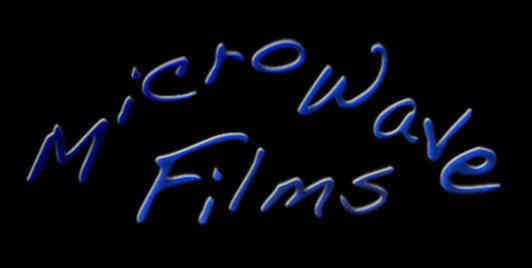Houston Chronicle
Sunday, November 3, 1996
"Graveyard of the Pacific"
By Harry Shattuck
Houston Chronicle Travel Editor
The Navy Helldivers remain in place on the hangar deck of the U.S.S.
Saratoga aircraft carrier, their wings folded and cockpits open just as
they were half a century ago.
The 16-inch guns of the Nagato, the Japanese battleship from which
Admiral Isoroku Yamamoto planned and directed the Dec. 7, 1941, attack
on Peal Harbor, are still intact.
The Anderson and Lampson destroyers, Gilliam and Carlisle attack transports,
Pilotfish submarine and Arkansas battleship - 21 World War
II vessels in all - are on clear display and primarily undisturbed.
It's a virtual museum that any military historian would relish
exploring.
It's 150 to 190 feet deep in the Pacific Ocean.
Tom Henkel longed to experience the grandeur of this underwater
spectacle from the moment last fall when he picked up a Houston
Chronicle Travel section and learned that Bikini Atoll, known as the
nuclear graveyard to the Pacific, would soon be opened to experienced
divers.
 For 50 years, since President Truman first OK'd the firing of the
For 50 years, since President Truman first OK'd the firing of the
world's fourth and fifth atomic bombs in 1946 as an attempt to determine their effect on U.S. warships, the one-time paradise had remained closed to tourists and unlivableeven for the Bikinian people who were displaced during what the military called Operation Crossroads.
But in August, Houstonian Henkel, general manager of corporate strategy and communications for Conoco Inc., and London-based Conoco colleague David Huber were among the first participants in a new week long diving program in the atoll.
Henkel's assessment: "It was easily the most spectacular diving trip I've experienced, and I feel certain this will become the premier wreck diving site in the world."
He is no novice, either. Henkel has dived at Truk Lagoon, Palau and Yap
in the Pacific, along Australia's Great Barrier Reef and in New Zealand
waters, in Mexico and the Caribbean and off Florida's coast. He's also
climbed Mount Kilimanjaro in Tanzania, conquered peaks in the Himalayas
and spent much of his 47 years chasing other adventures from China to
the Red Sea.
This was like nothing else he had ever witnessed.
Divers can read instruments on aircraft still aboard the Saratoga, which
sits upright on the ocean floor and represents the world's largest
underwater vessel at 880 feet in length. Bunks and other living
accommodations are clearly visible aboard submarines. "And you see an
incredible number of torpedoes and anti-aircraft guns," Henkel says.
"It's as if these ships just went down yesterday. Nobody's been there
for more than 40 years. The only people who have dived or fished here
were with the Department of Energy. A private sailing vessel still can't
come into this lagoon."
The ships were sunk not as an act of war but as sacrificial victims of a
scientific research project conducted jointly by the U.S. Army and Navy.
In 1946, almost 100 vessels were assembled at the eastern end of Bikini
Atoll. Then, as more than 40,000 military personnel and international
dignitaries watched, two atomic bombs - one code-named Able from the
air, the second called Baker beneath the ocean's surface -were detonated.
Ammunition was placed aboard ships in an effort to learn if an atomic
bomb would set it afire. It didn't. But the Able blast sank several
vessels. The more destructive Baker test threw a vast cloud of
radioactive spray one mile into the air, then down upon the ships. The
Saratoga sank within hours, others more slowly. Ships that survived
eventually were removed from the area and scuttled.
The experiments, which created widespread controversy, continued for 12
years. A 1954 hydrogen explosion, code named Bravo, was 750 times
stronger than the initial blasts.
Because of high radiation levels, the Bikinians, - with a population of
167 when the testing began has grown to 2,000 - were not allowed back
until the 1970s. When they returned, they discovered the soil so
contaminated that even the coconuts they grew were inedible.
They were displaced a second time to Kili, an island 400 miles to the
southeast, where they live largely off the interest generated by a
government trust fund. Several plans -including stripping off the top 18
inches of soil - are being considered so that the Bikinians can return
permanently.
The new diving program, operated by California-based Central Pacific
Dive Expeditions, has the Bikinians'endorsement. Henkel says he was
about the 20th paying customer.
These expeditions are not geared, Henkel cautions, toward novices.
"Every dive is a decompression dive," he says. "The shortest is about
150 feet deep." Participants are required to verify capabilities and
physical condition in advance.
And Henkel says, "You don't want to go there if you don't love diving.
There is nothing else to do. Only about 15 people live full-time on the
island (in conjunction with the diving program). Accommodations are
spartan. There is one small lodge, and the only furniture in my room was
a twin bed and dresser. There was no lamp, no side table, no pictures on
the wall. You can get soda and little cans of food at the one country
store, but it's seldom open because the man who runs the place usually
is gone fishing."
The main complex, known as Ground Zero and once occupied by Department
of Energy officials, includes dining facilities, a refrigerator and
freezer and a combination reading-and-video room.
All food must be imported. "The supply boat arrives only once a month
(from Majuro, capital of the Marshall Islands about 50 miles to the
southeast)," Henkel says. "But meals are good. We had healthy breakfasts -
eggs, toast, pancakes, French toast - and lots of carbohydrates at
lunch. We ate pork, chicken and steak at dinner. And fresh sashimi. That
was a real treat."
Merely reaching Bikini Atoll is an adventure.
Bikini is among 29 atolls and five islands that comprise the Marshall
Islands, which are scattered over 375,000 squaremiles just north of the
equator in the central Pacific. They help define a geographic area
generally referred to as Micronesia.
Henkel traveled to Honolulu on Continental Airlines, then continued to
Majuro on Continental Micronesia Air. An 18-passenger Air Marshall
Islands plane serves Eneu, an island eight miles from Bikini, once each
week.
"Passengers are told they can bring only 75 pounds of diving gear and
luggage," Henkel says. "Your body weight and all carry-on bags can weigh
a maximum of 275 pounds combined."
A boat - the Bravo, named for the hydrogen bomb and used as the dive
vessel - deposited them on Bikini, where the program, according to
Henkel, was first-class both in scope and safety.
"Fabio Amaral, the lead dive master, and the other two dive masters are
among the best with whom I've ever dealt," he says. "We did two dives
each day, each at depths of from 150 to 180 feet. We carried dive
computers that let you know how long you can stay down. It was usually
25-30 minutes. Then, when we came up, we'd spend 20-30 minutes at a
decompression bar 30 feet beneath the boat and another 20-30 minutes at
a second decompression bar 10 feet higher."
"They are putting a real emphasis on safety. And they're limiting the
programs to eight to 12 divers at any one time."
The 21 sunken ships are concentrated in a three-mile area. Henkel and
Huber dove to nine. "A white buoy is anchored to each of the ships, and
the name of the ship is stenciled on it," Henkel says.
Fish life is plentiful. "But you hardly notice them because of the
grandeur of the ships and because your time is so limited. As soon as we
got in the water the first day, we did encounter about a dozen sharks.
But they aren't man-eating sharks."
"Of course, these fish have never seen human life before," Henkel says.
Henkel says he was assured that divers risk no effects from radiation.
"It's all decayed and in the soil," he says. "We picked up more
radiation just flying there than on the atoll."
The current season ends this month, but diving resumes April 15, 1997,
and will continue through next Nov. 15. Individuals interested in going
to Bikini Atoll should begin planning now.
Henkel offers these suggestions. "Try to get hold of a buoyancy
compensator that allows for the attachment of two tanks. That will let
you stay down longer without running out of air. We used two
85-cubic-foot steel tanks."
"And take multiple gear: at least two full regulator sets, two
computers, two face masks, lots of extra batteries. Spares are essential
because there is no place within hundreds of miles to buy replacements.
Just be sure you don't exceed the weight restrictions."
The price for seven nights and five or six diving days at Bikini Atoll,
plus one night in Majuro, with meals included on the Atoll, is about
$2,750. Air fare is additional, and the flight from Majuro to Eneu costs
about $500.
Call (800) 846-3483 for more details. Or write to Central Pacific Dive
Expeditions, 29 Blazing Star, Irvine, Calif. 92714.

 |
The historical information within this site, while constantly updated, is drawn largely from the book, FOR THE GOOD OF MANKIND: A History of the People of Bikini and their Islands, Second Edition, published in September of 2001 by Jack Niedenthal. This book tells the story of the people of Bikini from their point of view via interviews, and the author's more than two decades of firsthand experiences with elder Bikinians.
Copies can be purchased from this direct ordering link at Amazon.com, or you can also buy and download the Kindle edition. |
 For 50 years, since President Truman first OK'd the firing of the
For 50 years, since President Truman first OK'd the firing of the

